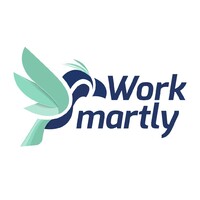This article is attributed to Victor Phang CEO and Founder of WorkSmartly
A well-coordinated team is a true asset to any organisation. According to research on team dynamics and performance, diverse and inclusive teams tend to make better decisions and are more innovative.
Striving to increase workplace diversity is not an empty slogan — it is a good business decision.
Diversification and equity initiatives are critical to a company’s success. However, these aspects don’t mean anything in the absence of an inclusive workplace. So the question becomes – how do employers establish a workplace that prioritises all three elements?
Diversity, Equity & Inclusion In the workplace
Diversity in the workplace usually involves people from different backgrounds, ethnicities, genders, ages working together without any disparagement. It usually refers to a gender ratio that is balanced, but it can also refer to people of non-binary genders. As a result, it can be defined as a balanced representation of all genders in any workplace.
On the other hand, equity is the value of being fair and equal based on individual contributions. There may be some confusion as to the difference between equity and equality. While equality means being equal to everyone by providing the same benefits to all, equity is an organisation’s ability to offer flexi-benefits according to individual needs so that they are able to reach their full potential. Workplace equity is all about empowering employees and ensuring that everyone is on an equal footing. When organisations promote equity in the workplace, they gain a competitive advantage by employing a diverse workforce. There is equal opportunity when there is equity.
Inclusion is the state that provides each and every employee with a sense of belonging despite gender racial and age differences. Workplace inclusion efforts help to give traditionally marginalised groups, even those with physical or mental disabilities, a way to feel equal in the workplace. However, because we are human beings driven by emotions as much as objectivity, it is easy to fall short of what constitutes a best practice and mistakes happen. To safeguard all employees and to ensure the highest standards of diversity, equity, and inclusivity, nonetheless, I would recommend using an automated system like WorkSmartly. With a trusted tool that is unbiased, employers can be more assured of employees having access to equal opportunity.
How Organisations Can Develop Diversity, Equity & Inclusion
Developing equitable workplaces will require sustained and prolonged efforts on the part of management and Human Resource (HR) teams as the most effective way to implement major changes effectively is through the top-down approach. Understanding internalised biases and their effects are the first steps in building equitable work environments as everyone was brought up differently and coming from various walks of life. This leads to different work experiences.
Everything should be colourless and generous to every employee, with a focus on matters or incidents rather than individuals. For example, companies should look to have a neutral time (example: company fiscal year) to hand out bonuses during “neutral” time periods, rather than during festive periods like Chinese New Year, Hari Raya, Deepavali as this may show bias toward a particular race.
Additionally, recruiters should demonstrate neutrality when selecting candidates. They should hire new employees based on their performance, skills, and capabilities, not on their own culture or other factors. Robust HR platforms like WorkSmartly filter candidate profiles and resumes according to their achievements, skills, and suitability. This would be particularly useful here as automated systems do not run the risk of being swayed by non-work-related differences. Ultimately, this ensures transparency in an environment that prioritises growth.
Another aspect to look forwards to is increasing digitisation which will create more opportunities for diversification. From remote work options to the rise in the gig economy, employers are no longer forced to default to traditional work practices. New generations are becoming more open and their cultural acceptance has increased due to greater exposure via technology. For example, the way the current workforce thinks and acts is getting more unified based on the influence of social media.
Challenges that Malaysian Employees Face in the Workplace
More than ensuring the diversity, equity and inclusion of a workplace, I think that it is important for employers to be aware of the external challenges frequently faced by the workforce. One of them is gender inequality. To date, it has been reported that only 38% of women occupy managerial roles as compared to 62% of men in managerial positions. In Malaysia, 56% of women have experienced at least one form of gender discrimination in the workplace, according to the “Voices of Malaysian Women On Discrimination & Harassment in the Workplace” survey. Women’s low participation in the workforce could be due to a variety of factors, including discrimination, harassment, and a greater unpaid care burden, which affects both employees and job seekers.
Besides that, people who have been out of work for a while have typically found it much harder to get a job. If being unemployed and finding a job weren’t hard enough already, research shows that large work history gaps are the main reasons that unemployed people aren’t getting hired. Prejudice against the unemployed isn’t limited to those who have been out of work for a long time, it can also apply to those who have recently quit or lost their jobs. While this has been an ongoing problem for many during the pre-pandemic period, those who faced retrenchment due to pandemic-related business closures have been particularly hard hit.
It is also important to note that diversity, equity and inclusion can’t be achieved when there is bias in the hiring process-the number one step for organisations to build strong, long-lasting foundations. Most companies typically lean towards hiring more experienced employees rather than fresh graduates. Many employers believe that this hiring strategy makes the transition easier as they already have background experience. The downside to this practice, however, is that it limits the opportunities and options for fresh graduates to learn new skills and demonstrate their talents to a company, eventually resulting in an out-dated talent pool. Therefore, I urge organisations to keep their windows as open and inclusive as possible to provide younger talents with opportunities to grow, thereby making way for fresh, new ideas that could result in a breakthrough.
It’s important to value diversity, equity, and inclusion. They make organisations stronger and more agile, and they are more important than ever in today’s rapidly changing business environment. Leaders who want to make significant progress should apply universal principles with care to their unique cultural and strategic circumstances. It’s important to consider the context.









